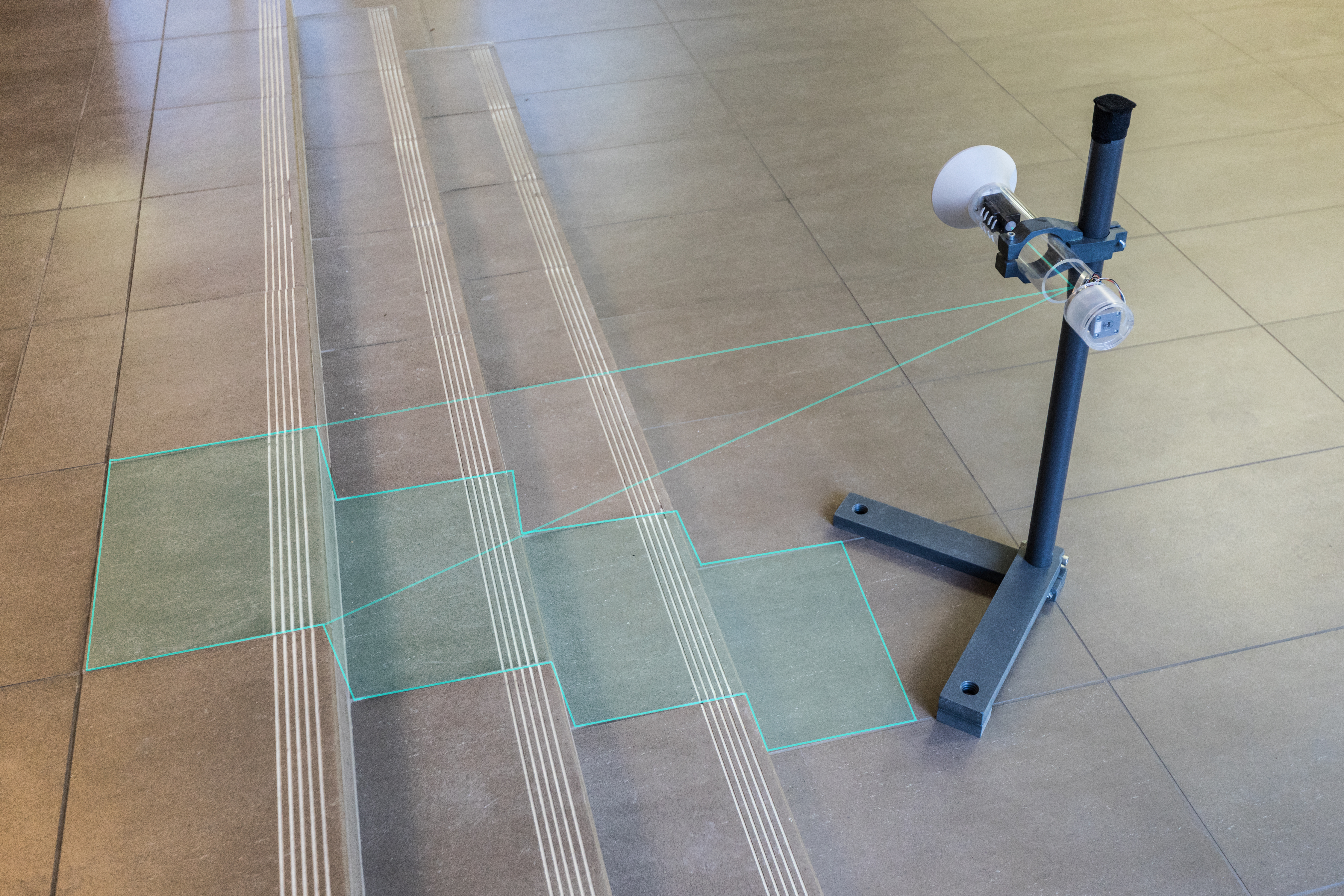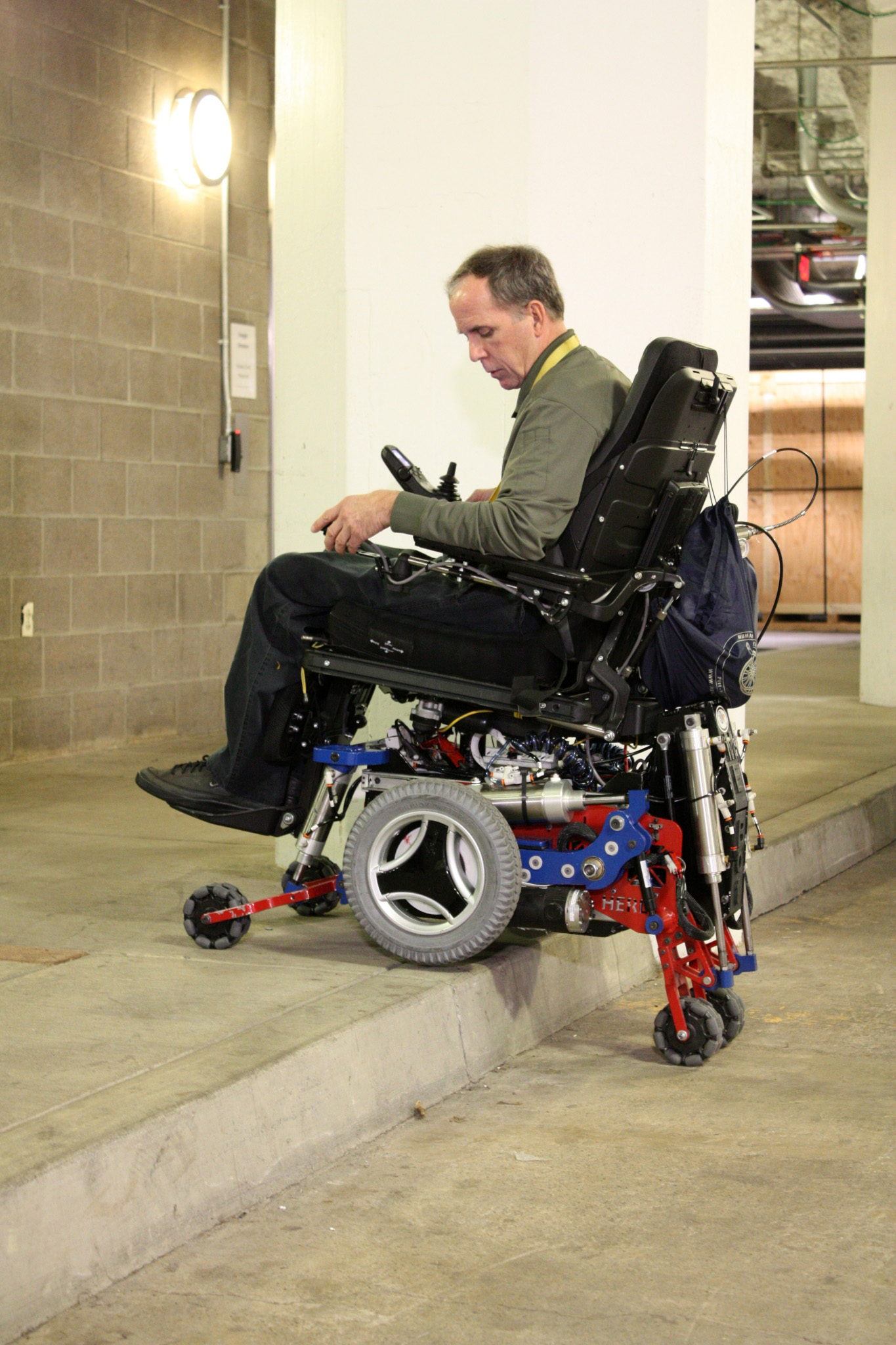Radar technology helps patients with limited mobility
Intelligent wheelchairs, predictive prostheses
If you use a wheelchair or have a prosthetic leg, small obstacles can become insurmountable barriers. Now, researchers at Fraunhofer IPA have developed a way to detect uneven ground, tiered levels or steps using radar. The information gained can be employed in orthopedic technology to control and stabilize prostheses or wheelchairs.
Stairs, stony paths and tiered levels – for wheelchair users, these obstacles are often insurmountable. This can also be dangerous for people with leg prostheses as an artificial limb cannot make compensatory movements, unlike a natural knee joint or ankle joint.
Bernhard Kleinert from the Biomechanical Systems Department at Fraunhofer IPA: »The research aimed to turn wheelchairs and prostheses into intelligent systems.« He and his team developed a sensor system that helps to recognize obstacles in good time and overcome them.
Small, light, energy-efficient: radar-on-chip
The central element of this new technology consists in using radar-on-chip sensors to scan the environment. Radar chips have several advantages over ultrasonic or laser sensors (which are traditionally used to control robots): They are significantly lighter and smaller, so they are particularly well suited to applications centered on mobility, and they also function outside of closed spaces. This is a huge advantage for use in orthopedic technology, since patients should be able to use the new features in as many scenarios as possible.
However, these inexpensive radar chips do have a disadvantage: They only have one antenna, which both sends out signals and receives the reflected radar signals. With this configuration, only objects that are directly hit by the radar beam are visible. This means that the reading is only one‑dimensional, which is not enough to locate obstacles.
Signal processing opens up new dimensions
Bernhard’s team used a trick to create a two-dimensional image from the one-dimensional readings. The project leader explains: »Similar to a laser scanner, which scans different points on a surface, we combine several reflections from different perspectives.«
The different perspectives occur almost spontaneously when the radar sensor is moved, for instance when someone wearing a prosthetic limb equipped with a sensor moves. Generating different perspectives is much more complicated when it comes to the sensor integrated into a wheelchair. Here, a mirror helps to direct the radar beam this way and that. With the different readings generated, an algorithm developed by Fraunhofer IPA creates a 2D image of the surrounding, which can be used to precisely locate the obstacle down to a few centimeters.
International collaborations
The experts at Fraunhofer IPA have already patented the procedure. Together with Icelandic company Össur, a leading prosthesis manufacturer, they are now exploring how electronic control of leg prostheses can be improved using the radar images.
In a research project with the Human Engineering Research Laboratories HERL of the University of Pittsburgh in America, Fraunhofer engineers are developing an intelligent wheelchair with movable wheel joints that can even overcome stairs.

